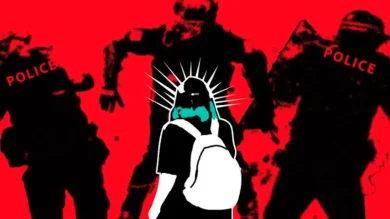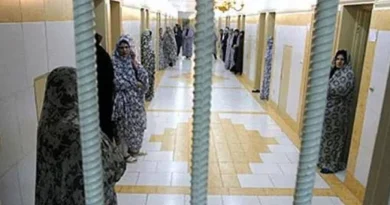In the face of severe repression by the Islamic Revolutionary Guard Corps (IRGC), Iranian women have turned to social media as a powerful tool of resistance, activism, and mobilization. Platforms like Twitter, Instagram, Telegram, and TikTok have become essential in documenting human rights abuses, organizing protests, and amplifying voices that the regime seeks to silence.
Despite internet blackouts, cyber surveillance, and digital repression, Iranian women have pioneered new forms of online activism, using technology to bypass censorship and keep their movement alive. This article explores:
• How social media empowers Iranian women to challenge the IRGC’s control.
• The IRGC’s digital repression tactics and how women fight back.
• Key digital activists and their impact.
• How global allies can support Iranian women’s digital resistance.
1. The Role of Social Media in Iran’s Women-Led Resistance
A. Breaking the State’s Information Monopoly
The IRGC controls state-run media, ensuring that only the regime’s narrative is broadcasted. Iranian women have used social media platforms to:
• Document protests and human rights violations in real-time.
• Share unfiltered news with global audiences.
• Expose the IRGC’s brutality, countering state propaganda.
Example: During the Mahsa Amini protests, videos of women removing their hijabs and facing violent crackdowns spread rapidly on Twitter and Instagram, triggering international outrage.
B. Organizing and Mobilizing Protests
Social media has revolutionized protest coordination by:
• Providing real-time updates on safe locations and police movements.
• Allowing activists to spread protest slogans and resistance symbols.
• Connecting diaspora Iranians with movements inside the country.
Example: Protesters have used Telegram channels to share meeting points, safety tips, and ways to bypass internet shutdowns.
C. Digital Advocacy for Imprisoned Women
Iranian women use social media to:
• Raise awareness about political prisoners.
• Pressure international organizations to act.
• Amplify prisoner voices through campaigns like #FreeIranianWomen.
Example: The case of Narges Mohammadi, a prominent activist imprisoned by the IRGC, gained global attention through social media advocacy, leading to her Nobel Peace Prize recognition.
2. The IRGC’s Digital Repression Tactics
A. Internet Blackouts and Censorship
The IRGC frequently shuts down the internet during uprisings to silence dissent. Common tactics include:
• Blocking social media platforms like Twitter, Instagram, and Telegram.
• Slowing down internet speed to prevent video uploads.
• Shutting down mobile networks in protest zones.
Example: During the Mahsa Amini protests, Iran experienced the largest internet blackout since the 2019 uprisings.
B. Cyber Surveillance and Digital Spying
The IRGC monitors online activity using:
• Spyware and hacking techniques to track activists.
• Fake social media profiles to infiltrate resistance groups.
• Phone tracking to locate protest leaders.
Example: Activists have reported receiving threatening messages from anonymous accounts linked to the IRGC, warning them to stop their activism.
C. Disinformation Campaigns
The regime spreads fake news to:
• Discredit activists and label them as foreign agents.
• Spread fear by falsely claiming activists have been arrested or killed.
• Confuse protest coordination by distributing false meeting locations.
Example: IRGC-affiliated accounts spread fake news about protests ending to discourage turnout.
3. Women Leading the Digital Resistance
A. Masih Alinejad: The Voice of Iranian Women Online
Masih Alinejad, an exiled Iranian journalist, uses social media activism to:
• Run the #MyStealthyFreedom campaign, encouraging women to post hijab-free photos.
• Expose IRGC brutality through viral videos.
• Call for global action against the regime’s oppression.
Her digital activism has made her a target for IRGC assassination plots, but she continues to amplify Iranian women’s voices.
B. The Women of Mahsa Amini’s Movement
After Mahsa Amini’s death, women-led digital movements such as:
• #MahsaAmini – demanding justice and global awareness.
• #WomenLifeFreedom – now a universal feminist slogan.
• #StopExecutionsInIran – calling for an end to IRGC’s death penalties.
These campaigns mobilized millions and forced governments to impose sanctions on Iranian officials.
4. How Iranian Women Bypass Digital Censorship
A. Using VPNs and Secure Messaging Apps
To bypass state censorship, activists use:
• VPNs (Virtual Private Networks) to access blocked websites.
• Encrypted apps like Signal and ProtonMail for secure communication.
Example: During protests, Telegram channels provide VPN recommendations to help users stay connected.
B. Anonymous Social Media Accounts
Many Iranian women use pseudonyms to avoid detection while:
• Documenting protests and police violence.
• Reporting human rights violations.
• Spreading uncensored news.
Example: Several anonymous Twitter accounts played a key role in sharing footage of IRGC crackdowns during the 2022 protests.
C. Digital Solidarity from the Diaspora
Iranian women outside the country help activists by:
• Reposting censored content to keep stories alive.
• Raising awareness through petitions, protests, and media coverage.
• Providing cyber security training to activists inside Iran.
Example: Exiled activists launched the #InternetForIran campaign, pressuring tech companies to provide uncensored access for Iranians.
5. The Role of Global Solidarity in Supporting Digital Resistance
A. Governments Must Pressure Tech Companies
International governments should:
• Demand social media platforms prevent IRGC-affiliated state propaganda.
• Ensure VPN access remains legal and accessible.
• Offer asylum for digital activists facing persecution.
B. Supporting Digital Freedom Organizations
Organizations like:
• Access Now
• NetBlocks
• Amnesty International
Work to provide:
• Secure communication tools for activists.
• Legal support for persecuted digital activists.
C. Amplifying Iranian Women’s Digital Activism
Individuals worldwide can help by:
• Following and sharing Iranian activists’ content.
• Using hashtags like #WomenLifeFreedom to increase visibility.
• Writing to policymakers to ensure continued pressure on Iran.
Conclusion: The Future of Iran’s Digital Resistance
Despite the IRGC’s crackdown, Iranian women’s digital resistance remains strong and evolving. Through social media activism, encrypted communication, and global solidarity, Iranian women continue to:
✔ Expose the regime’s crimes.
✔ Mobilize protests and resistance.
✔ Challenge state narratives.
Join Our Newsletter!
Stay informed with the latest updates, news, and ways to take action in the fight for justice and global security. Sign up now to get updates delivered straight to your inbox!





